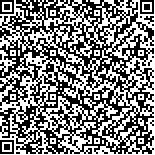本文已被:浏览 787次 下载 563次
Received:January 03, 2020 Published Online:September 20, 2020
Received:January 03, 2020 Published Online:September 20, 2020
中文摘要: 目的 评价对于急性冠脉综合征(痰浊血瘀证)患者行经皮冠状动脉支架植入(PCI)术后在常规药物治疗基础上联合化瘀祛痰颗粒治疗,对于患者长期预后的影响。方法 本研究为随机、双盲、安慰剂对照临床研究。入选辽宁中医药大学附属医院心内科2017年9月至2018年9月,符合急性冠脉综合征(痰浊血瘀证)并行PCI治疗患者,患者入选后随机分入化瘀祛痰颗粒组(化瘀祛痰颗粒+常规药物)与安慰剂组(安慰剂+常规药物)治疗1个月,随访12个月。主要终点指标为12个月内净临床心脑血管不良事件发生率(MACCE),包括全因死亡、心肌梗死、卒中、严重出血(出血学术研究联合会BARC≥3型);次要终点指标为12个月内全部出血发生率(出血学术研究联合会BARC≥2型)。结果 本研究共入选440例患者,化瘀祛痰颗粒组220例,安慰剂组220例。两组基线资料情况差异无统计学意义。主要研究终点,12个月MACE发生率方面,化瘀祛痰颗粒组低于安慰剂组,结果有显著统计学差异(6.8% vs 12.3%,P=0.047),心肌梗死发生率(4.5% vs 9.1%,P=0.057)、卒中发生率(1.8% vs 1.8%,P=0.992)、全因死亡发生率(1.4% vs 0.9%,P=0.655) 差异无统计学意义。次要终点12个月出血事件发生率,两组差异无统计学意义(6.8% vs 5.9%,P=0.445)。结论 对于急性冠脉综合征(痰浊血瘀证)患者PCI术后在常规药物基础上,联合应用化瘀祛痰颗粒1个月,可以降低患者术后12个月主要心脑血管不良事件发生率,同时并不增加出血发生率。
中文关键词: 化瘀祛痰颗粒 急性冠脉综合征 痰浊血瘀证 经皮冠状动脉介入术 主要心脑血管不良事件
Abstract:Objective To evaluate the long-term prognosis of Huayu Qutan granule combined with conventional drug therapy in acute coronary syndrome (ACS) patients of phlegm turbid and blood stasis syndrome after percutaneous coronary intervention (PCI). Methods The patients with acute coronary syndrome (phlegm turbidity and blood stasis syndrome) and received PCI treatment at the Affiliated Hospital of Liaoning University of Traditional Chinese Medicine from September 2017 to September 2018 were selected and divided into Huayu Qutan granule group ( Huayu Qutan granules+conventional drugs) and placebo group (placebo+conventional drugs) randomly, all the patients were treated for 1 month and followed up for 12 months.The primary endpoint was the incidence of major adverse cardiovascular and cerebrovascular events (MACCE) within 12 months, including all-cause death, myocardial infarction, stroke, and severe bleeding (bleeding academic research association BARC≥3); the secondary endpoint was the incidence of total bleeding within 12 months (bleeding academic research association BARC≥2). Results A total of 440 patients were enrolled in this study, 220 cases in Huayu Qutan granule group and 220 cases in placebo group.Primary endpoint:There was no significant difference in baseline data between the two groups.The 12 months MACCE incidence rate in Huayu Qutan granule group was significantly lower than that in the placebo group (6.8% vs 12.3%, P=0.047).There was no significant difference in the incidence of myocardial infarction (4.5% vs 9.1%, P=0.057), stroke (1.8% vs 1.8%, P=0.992) and all-cause death (1.4% vs 0.9%, P=0.655).Secondary endpoint:There was no significant difference in the incidence of bleeding events between the two groups at 12 months (6.8% vs 5.9%, P=0.445). Conclusion For patients with ACS (syndrome of phlegm turbidity and blood stasis), combined application of Huayu Qutan granules on the basis of conventional drugs for one month can reduce the incidence of MACCE in 12 months after PCI, and does not increase the incidence of bleeding.
keywords: Huayu Qutan granule Acute coronary syndrome Syndrome of phlegm turbid and blood stasis Percutaneous coronary intervention Major adverse cardiovascular and cerebrovascular events
文章编号: 中图分类号: 文献标志码:A
基金项目:辽宁省自然科学基金(20180550907)
| Author Name | Affiliation |
| YU Le, CHEN Wei, QI Jing, ZHOU Xin | Cardiovascular Department, the Affiliated Hospital of Liaoning University of Traditional Chinese Medicine, Shenyang, Liaoning 110032, China |
| Author Name | Affiliation |
| YU Le, CHEN Wei, QI Jing, ZHOU Xin | Cardiovascular Department, the Affiliated Hospital of Liaoning University of Traditional Chinese Medicine, Shenyang, Liaoning 110032, China |
引用文本:
